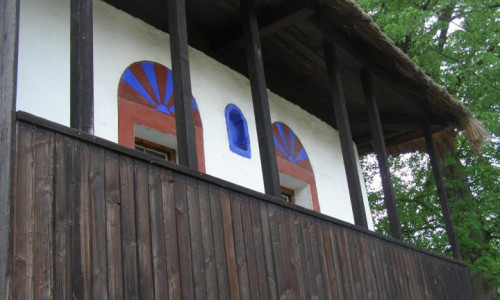In Bartošova Lehôtka, a small village in central Pohronie, architecture has long been part of cultural traditions, passed down by generations of residents. The inhabitants of Bartošova Lehôtka, 6 km south of the mining "golden" Kremnica, have always been poor farmers, occasionally earning money by cart - by delivering agricultural products and handicrafts to fairs and markets in larger settlements. They built their houses along the stream in terraced buildings; Typical were mainly basement stone houses with thatched roofs and thatched gables - they were built mainly in the 19th century.
The inhabitants of Bartošova Lehôtka covered the roofs of their mostly three-room houses with a cheap natural material - straw. At present, cultural traditions in this region of Slovakia are in constant contradiction with the so-called modernization of rural settlements, so many building elements of the original folk architecture give way to the requirements of local residents and new homeowners for the design of family houses. Uncontrolled and unprofessionally carried out reconstructions and reconstructions of older houses have caused that today we can find only one stone house with a thatched roof in Bartošova Lehôtka. This witness of the ancient past can be seen from the main road at the end of the turn to the village, where it stands above a steep bend under the Baroque church of St. John of Nepomuk from 1673.
The family house was built in the middle of the 19th century by the grandparents of Ján Baláž, who was its last owner. This peasant homestead is the last completely preserved house of the Hornotekov type of folk architecture in the Kremnica area. It is this house that materializes all the elements of traditional folk architecture, characteristic of this type of buildings. It represents a unique bridge between the cultural traditions and artistic expression of several generations of the inhabitants of Bartošova Lehôtka and its current inhabitants. The importance of this rare example of folk architecture of the Kremnica mining area is also confirmed by its entry in the Central List of Cultural Monuments of the Slovak Republic.
Aktivity NT
In 2001, the building passed into the ownership of NT n.o., unfortunately in a very dilapidated state. Since this year, our organization has been striving for the gradual restoration of individual building parts of this unique example of folk architecture. Our effort is to use this building mainly for educational purposes as an illustrative live demonstration of folk architecture. At the same time, we want the building to serve as a pleasant social and cultural center for local residents.
In 2012, as a result of adverse weather conditions, but also due to the natural process of aging and wear, the condition of the thatched roof on the building critically deteriorated. Pieces of straw gradually fell off and there was a risk that the roof would lose its entire straw roofing. Fortunately, this year we managed to get financial support from the Ministry of Culture of the Slovak Republic and under the leadership of one of the few experts on thatched roofs, Mr. Peter Brada from Hrušov, we began to restore the roof, grow the necessary material called kribica – an old variety of reed rye and regularly organize a practical workshop, where we teach this traditional building technology to other interested parties. We have set up a mini-exhibition "How to restore and make a thatched roof" in the building, which can be visited.
Vstupenky
Adult: 5 Euro
Discounted admission – senior 60+, students (15 – 26 years), disabled and accompaniment: 3 Euro
Children under 15 years of age: free of charge
Members of National Trust o.z. and holders of a membership card with the logo of the International National Trusts Organisation: free of charge
Fotogaléria






